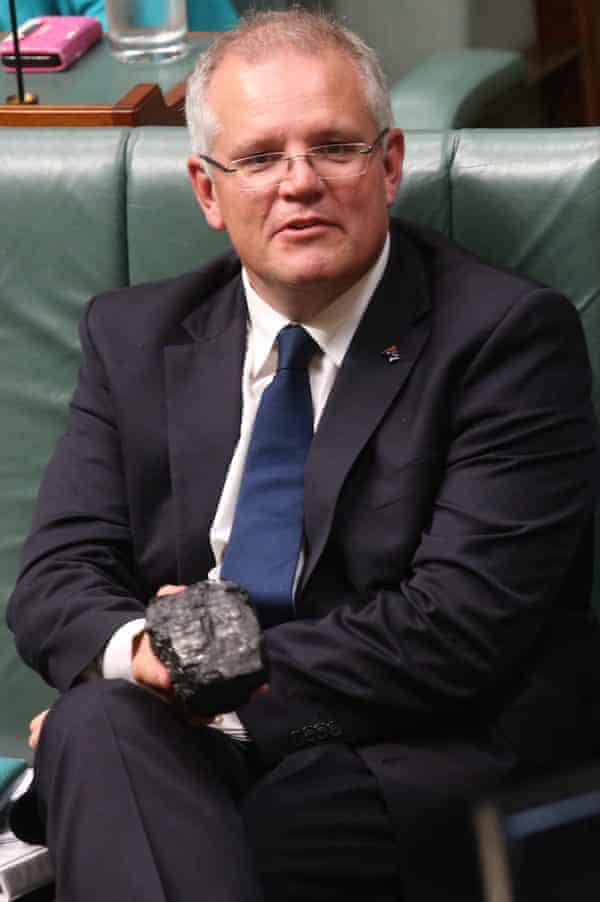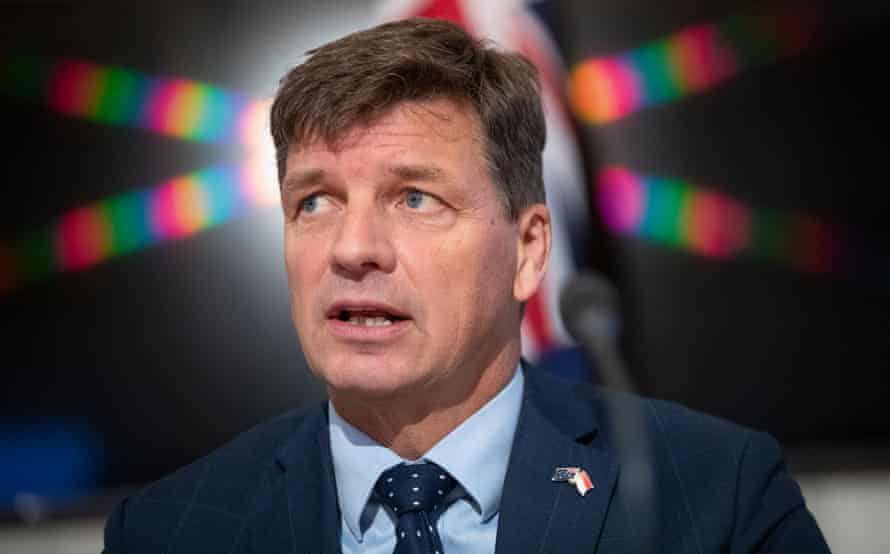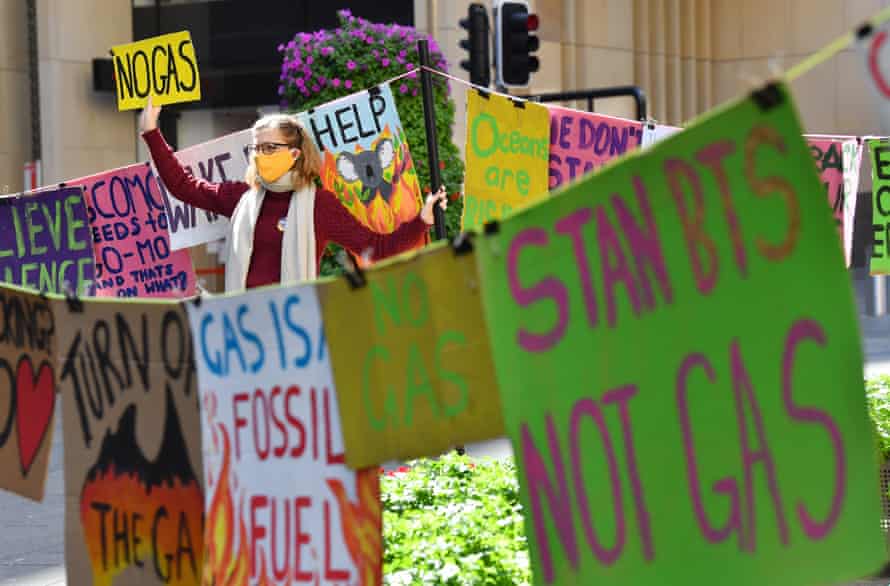Eight years, 20 policies: how Australia’s leaders have fumbled and dithered on climate

How did we get here? And how much has actually changed? Before we look forward to 2050, let’s take a look back …
Consistency is so last decade, don’t you think?
And mea culpas? Never met them.
In the last eight years of Coalition rule, there have been more than 20 different climate and energy policies, which have been announced with fanfare before fizzing into the background, or just being trashed altogether.
Here’s a short rundown of what the last eight years has looked like.
2013-14 – Direct(ish) action
After Tony Abbott repealed Labor’s carbon price, his new government replaces the measures with the Direct Action policy. It is described as “a scheme that will provide the incentive for firms to reduce their carbon emissions and, at the same time, minimise the costs to industry and the Australian economy”. The emissions reduction fund is a key component, set up to “directly support CO2 emissions reduction activities by business and industry”. The original idea behind the ERF is that the government will pay for projects that will reduce CO2 emissions “at least cost”.
Its adequacy and impact are questioned from the beginning and it has limited real-world impact.
2017 – ‘This is coal’
Scott Morrison brings in a lump of coal to parliament and coos, “This is coal. Do not be afraid. Do not be scared. It will not hurt you,” before passing it around the frontbench where it is cradled by Barnaby Joyce. At the same time, the Turnbull government insists it is taking climate policy seriously.
2017 – Clean energy target overhaul
Malcolm Turnbull embarks on designing a new energy policy to improve system reliability while reducing emissions in electricity. The chief scientist, Alan Finkel, suggests the government adopt a clean energy target. That proposal lasts about five minutes. The rejection of the clean energy target leads to the national energy guarantee, which signals the end of Turnbull’s prime ministership.
2017-18 – National energy guarantee (1, 2 and 3)
First mentioned in late 2017, the Neg imposes two obligations on energy retailers: to supply sufficient quantities of “reliable” power to the market, and to reduce emissions between 2020 and 2030.

Turnbull wants to legislate the mechanism but the proposal becomes enmeshed in leadership tensions. With rightwingers moving against him, he proposes implementing elements of the Neg through regulation rather than legislation.
When Morrison takes over as prime minister, he dumps the Neg’s emissions reduction component altogether.
2018 – RET wind-down (and the policy for no policy)
In 2013 Abbott tried to move against the renewable energy target as well as Labor’s carbon price. This failed but the scheme was criticised by the Coalition for bringing too much intermittent renewable energy into the power grid.
Five years later, with the RET due to expire in 2020, the minister for emissions reduction, Angus Taylor, says there will be no policy to replace it. “The truth of the matter is the renewable energy target is going to wind down from 2020, it reaches its peak in 2020, and we won’t be replacing that with anything,” he says.
That contradicts advice from the energy security board, which says investors and the market need policy certainty to ensure orderly investment.
2018-19 – Default energy prices and big sticks
With new climate policy in the too-hard basket, the Coalition focuses on energy prices. At this point, the Morrison government is still not ruling out investing in further coal stations.
The “big stick” policies are designed to give the government powers to break up energy companies if consumer prices don’t fall. In the end, the government backs down from its threat of divesture powers, and the stick becomes more of a twig amid internal and external discord at the idea. The divesture powers go from complete ministerial discretion, to Australian Competition and Consumer Commission advice and ministerial discretion, to no divesture powers.
A default market offer for energy prices is also introduced, which forces power companies to lower their opening offers to customers, and make it easier for consumers to find cheaper electricity plans. All of this is geared towards the coming 2019 election, which the Coalition wins.
2018-20 – Coal is still king. Sort of
Facing a possible blow-up from the Nationals, Taylor floats the idea that taxpayers indemnify new coal projects against any sort of carbon price.
“What we are saying is the risks that government needs to absorb to get investment in reliable generation, we will look at absorbing,” he says. “We need the investment.”
Power companies are moving away from coal as generation assets age, and firmed renewables lower in price. But the Nationals want to prolong coal generation. A standoff with private power companies heats up over the future of their ageing coal assets. The Nationals propose taxpayer underwriting of new coal generation. But that proves a red line for Liberals in metropolitan seats.

There are internal tensions about carbon risk and banks refusing to finance new coal projects. The Nationals go to war with the banks, accusing them of virtue signalling. But Liberals argue banks are acting prudently.
2019-21 – Nuclear power could be king. Maybe
In yet another attempt to quell rumblings within the National party, some suggest nuclear power is a potential answer to everyone’s problems. A parliamentary inquiry is established to look into an Australian nuclear power industry, which government MPs support and non-government MPs do not. Australia has a moratorium on nuclear energy for one thing, for another, there is no guarantee of a commercial return, given the cost. And that’s even with a carbon price, which the Morrison government is against. Nuclear power is not carbon neutral and it is not a renewable energy (uranium is finite).
Still, the nuclear debate continues. Now with News Corp advocacy.
2019 – No need to make changes
In a press conference before his address to the UN in New York, Morrison says his government’s record on climate has been “misrepresented” by the media.
Asked whether Australia intends to update its emissions reduction commitments as required by the Paris agreement’s five-yearly review process, he suggests that Australia’s 2030 target is fixed: “We are keeping to the commitments we have set and do you know why? That’s what I put to the Australian people.”
2019 – $1bn for hydro, gas and batteries
Turns out that not having a stable climate policy is not great when it comes to investment. So the government turns to the Clean Energy Finance Corporation and offers up $1bn “to support Government investment in new energy generation, storage and transmission infrastructure, including eligible projects shortlisted under the Underwriting New Generation Investments (UNGI) program”. (Not the coal ones though.)
The investment is a bit of a turnaround from 2015 when Abbott tried to abolish the fund, and then, when the Senate wouldn’t let him, banned it from investing in major wind and solar projects.
2020-21 – Gas-led recovery
Of course, this is still Australia, so the clean energy fund and the Australian renewable energy agency find their mandates changed so they can be used to finance and support fossil fuel projects, as long as there is some (so far failed) carbon abatement project attached.
“There are no good and bad emissions reductions,” Morrison says. There are only emissions reductions. Emissions reductions by different means have no greater or lesser moral qualities.”

This is mainly done because of the “gas-led recovery” the government decides is going to lead Australia out of Covid.
Gas is, of course, a fossil fuel. The gas-fired recovery is the brain child of the Covid advisory recovery committee headed by Nev Power, a former mining executive.
2020-21 – Technology roadmap
The last couple of years have all been about roadmaps and shifting horizons, so it makes sense that a technology roadmap is created to shape Australia’s climate policy. The main takeaway? “Technology not taxes”. Which ignores the fact that no one is proposing a tax, because this is not 2010 and the world has moved on.
The Intergovernmental Panel on Climate Change drops its latest report, which finds we are almost out of time to act in any sort of meaningful way on the climate crisis. Which increases pressure on Australia from its key allies and trading partners – the US, Europe and the UK, to commit to doing something. So far, what Australia has floated is deemed insufficient.
An actual plan is now apparently forthcoming but first it has to get past the Nationals. There is a meeting on Sunday to discuss the plan, which is meant to finally commit Australia to a net zero emissions target by 2050. Just no one mention 2030.
2021 – Glasgow is a go
After first saying his job was to stay and speak to Australians about the plan, not the international community, Morrison confirms he will attend the UN climate summit next month, where he will present Australia’s climate plan to the world.
It is worth keeping in mind that the government is focused on all things 2050, while the world is moving to medium-term targets for 2030. That debate is still very much not settled in Australia.
It’s also worth keeping in mind that net zero emissions does not mean no emissions.

